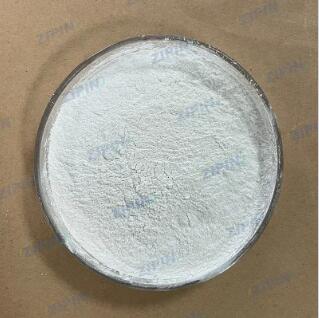Exploring the Primary Natural Sources of Beta-Caryophyllene
2024-03-18
Beta-caryophyllene, often abbreviated as BCP, is a fascinating compound found in nature that has gained considerable attention due to its potential health benefits. It belongs to the family of sesquiterpenes, which are organic compounds commonly found in essential oils and plants. Among its many properties, beta-caryophyllene is renowned for its anti-inflammatory, analgesic, and antioxidant effects. But where does this compound come from? Let's delve into the primary natural sources of beta-caryophyllene and explore their significance.
Introduction to Beta-Caryophyllene:
Beta-caryophyllene is a bicyclic sesquiterpene that contributes to the characteristic aroma of many plants. Notably, it's the only known dietary cannabinoid, interacting specifically with the endocannabinoid system's CB2 receptors, albeit without producing any psychoactive effects typically associated with cannabinoids like THC.
Natural Sources of Beta-Caryophyllene:
1. Cannabis Sativa:
Cannabis sativa, commonly known as marijuana or hemp, is one of the most well-known natural sources of beta-caryophyllene. This compound is present in the resin produced by the glandular trichomes of the cannabis plant. It's one of the many phytochemicals contributing to the complex profile of cannabinoids and terpenes found in different cannabis strains.
2. Black Pepper (Piper nigrum):
Black pepper is another significant natural source of beta-caryophyllene. It's found in the essential oil derived from black pepper seeds. This spice has been used for centuries not only for its culinary properties but also for its potential medicinal benefits. Beta-caryophyllene contributes to black pepper's distinctive spicy and peppery aroma.
3. Clove (Syzygium aromaticum):
Clove, a popular spice derived from the flower buds of Syzygium aromaticum, is rich in beta-caryophyllene. Clove oil, extracted from the buds, contains a notable amount of this compound. In addition to its culinary uses, clove has been traditionally used for its analgesic and antiseptic properties.
4. Rosemary (Rosmarinus officinalis):
Rosemary is an aromatic herb known for its culinary uses and medicinal properties. It contains beta-caryophyllene in its essential oil, contributing to its characteristic scent. Rosemary has been studied for its antioxidant and anti-inflammatory effects, which may be attributed in part to beta-caryophyllene.
5. Hops (Humulus lupulus):
Hops, the flowers of the Humulus lupulus plant, are primarily known for their use in brewing beer. These flowers contain beta-caryophyllene among other terpenes and phytochemicals. While hops are primarily associated with the beer-making process, they also have potential health benefits due to their phytochemical content.
6. Basil (Ocimum basilicum):
Basil, a widely used culinary herb, contains beta-caryophyllene in its essential oil. This compound contributes to basil's distinct aroma and flavor. Basil is not only valued for its culinary applications but also for its potential health-promoting properties, which may be attributed in part to beta-caryophyllene.
Conclusion:
Beta-caryophyllene is a remarkable compound with diverse health benefits, ranging from anti-inflammatory and analgesic effects to antioxidant properties. Its presence in various natural sources such as cannabis, black pepper, clove, rosemary, hops, and basil highlights the widespread occurrence of this compound in nature. Understanding the primary natural sources of beta-caryophyllene not only sheds light on its origins but also underscores the potential therapeutic value of incorporating these sources into our diets and lifestyles. As research continues, we may uncover even more about the diverse roles beta-caryophyllene plays in promoting health and well-being.



